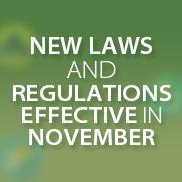Legal aid in China
The Chinese government proposed the building of a legal aid system with Chinese characteristics in 1994. Then the Criminal Procedure Law and Lawyer's Law of the People’s Republic of China, in 1996, defined the status of legal aid in the judicial system, and the 10th Five-Year Plan for National Economic and Social Development (2001-2005) made developing a legal aid system a goal of social development in 2001, and the Regulations on Legal Aid took effect on Sept 1, 2003, stating that it is the duty of the government to provide legal aid.
There are two criteria for deciding eligibility for legal aid: financial means and legal matters. And, in view of the uneven economic development in China, the Regulations on Legal Aid authorizes people’s governments of provinces, autonomous regions and municipalities to draw up standards in accordance with the economic situation and the practical needs of their administrative region, so there is no unified monetary scale standards for the whole country, but, generally speaking, citizens with access to social relief all qualify for legal aid. The legal affairs can be categorized as criminal, civil or administrative.
In the criminal process, financially disadvantaged people suspected of criminal behavior and under investigation, victims of public prosecution cases, and private lawyers without agent ad litem can apply for legal aid. People’s courts should or may designate a lawyer for a defendant in a public prosecution case who cannot afford one for financial difficulties or other reason, or who are blind, deaf, mute, or a minor or who are at the risk of facing death penalty but do not have a lawyer.
In civil and administrative cases, citizens claiming State compensation or social security or subsistence allowances, or allowances for bereft families, or payment of maintenance for a parent, child, spouse, or any other dependent, or payment for labor, or claims for civil rights and interests arising from a courageous act, or workplace injury compensation can apply for legal aid. The Regulations on Legal Aid authorize the governments of provinces, autonomous regions and municipalities to decide on provisions for legal aid affairs not covered in the Regulations on Legal Aid, in accordance with the economic situation and local demand for legal aid. Currently, the majority of provinces, regions and municipalities have damage compensations for traffic accidents and medical accidents, domestic violence, land requisition or house removal, false or substandard seeds, pesticides, or chemical fertilizers or environmental pollution, claims for school-age children and adolescents for a compulsory education, and cases of the disabled, minors, or the elderly claiming infringement of rights or damage compensation.
There are now more than 3,200 government legal aid institutions covering all administrative regions across the country to accept, investigate, and approve applications for legal aid, designate a lawyer for a case, supervision service, and pay subsidies for legal aid cases. In addition, to make legal aid available to financially disadvantaged people, there are at least 50,000 community stations to handle legal aid applications. With these legal aid institutions, citizens can get legal advice, representation and service of a criminal defense lawyer free of charge and even those people not eligible for legal aid can get some free legal advice from these institutions through a hotline - at 12348 - for help over the phone or at-home advice. In recent years, these services have handled 4 million people annually and about 500,000 instances of legal aid on average, benefitting more than 600,000 people, 50 percent of them farmers or migrant workers, 20 percent female, 7 percent disabled, 15 percent minors and 10 percent elderly.
Legal aid is mainly provided by lawyers and grass-roots legal affairs workers. The Lawyer's Law and the Regulations on Legal Aid of the State Council state that lawyers must provide legal aid with a mixed system, where 30 percent are handled by public-employee lawyers (about 6,000) from legal aid institutions, 35 percent by social lawyers (about 140,000), and 32 percent by grass-roots legal affairs workers (about 90,000). The major source of funding for legal aid is the government, with legal aid expenses included in the budget at all levels. The funds earmarked must be used exclusively for this purpose — mainly to cover the cost of handling cases and fees for the workers. At the same time, social institutions are encouraged to participate and China has five legal aid foundations, such as the China Legal Aid Foundation and the Beijing Legal Aid Foundation, to accept contributions from home and abroad to support public welfare organizations in providing free legal assistance.
The Regulations on Legal Aid says that the Justice Ministry and judicial administrations are in charge of supervising and managing legal aid and the Ministry has set up a Legal Aid Dept and Legal Aid Center to check the enforcement of laws, regulations, policies, and the quality of legal aid, check arrangement overall, manage legal aid agencies and workers, guide social institutions and volunteers in legal aid, carry out legal aid campaigns, organize legal aid training programs, organize international exchanges and cooperation on legal aid affairs, manage the 12348 hotline, and conduct related research.
Over the years, China has seen progress in its legal aid, but there are still many difficulties and challenges, for instance, uneven urban and rural development, lack of financial backing, the number and qualifications of legal aid workers not meeting demand, inadequate public awareness and visibility of legal aid, and lack of legal knowledge among the public.

